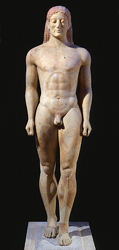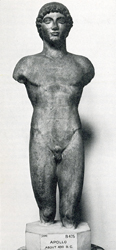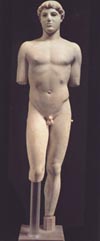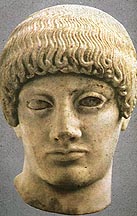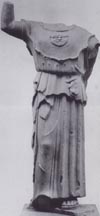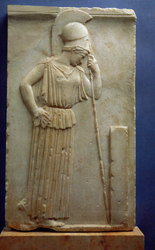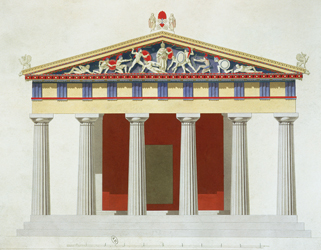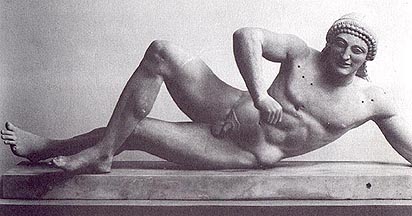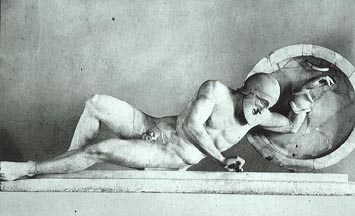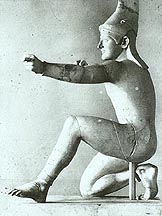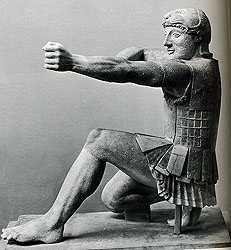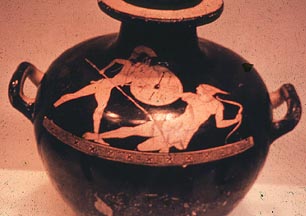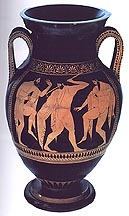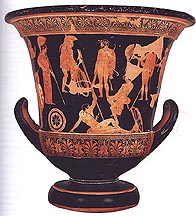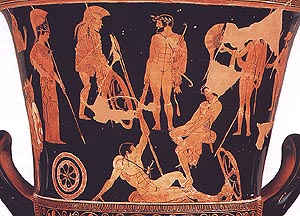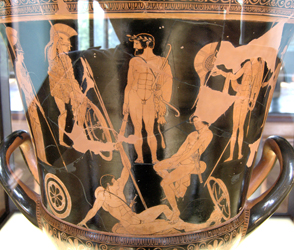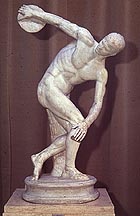ARTH Courses | ARTH 209 Assignments
Early Classical
Anavysos Kouros (Kroisos), c. 540=515.
Aristodikos Kouros, c. 500-490 B.C.
Kouros from the Acropolis, c. 490 B.C.
"Strangford Apollo", c. 490 BCE.
"Kritios Boy", c. 480 B.C.
Blond Boy, c. 480 B.C.
Angelitos' Athena from the Akropolis, c. 480 B.C.
"Mourning Athena", c. 470 BCE
Reconstruction of the Temple of Aphaia at Aegina (c. 470s) Older texts date the Temple to about 510 BCE but recent archaeological investigation published in 2008 demonstrates that the building was not built before the 470s. While earlier scholarship assumed that the pediments come from different periods with the west pediment coming from the end of the 6th century and the east pediment from the early 5th century, the revised dating suggests that both pediments were done in the 470s with the difference in style reflecting different workshops, one working in an late archaic style while the other uses an early classical style.
Reconstruction of the East Pediment of the Temple of Aphaia at Aegina.
Fallen Warrior from the west pediment from the Temple of Aphaia at Aegina.
Warrior from the Temple of Aphaia at Aegina.
Detail of Fallen Warrior from the Temple of Aphaia at Aegina.
Archers from the Temple of Aphaia at Aegina.
Berlin Painter, Hydria with Achilles slaying Penthesileia, c. 490 B.C.
Euthymides, Revelers Amphora, c. 510 B.C.
Niobid Painter Krater, c. 460-450.
Heroes with Athena watching on gather around the figure of Herakles. It is known that the Athenian army assembled in the sanctuary of Herakles before the battle of Marathon. So perhaps these are the heroes of Athens meeting at the shrine of Herakles before Marathon.
Detail from Niobid Painter Krater
Artemis and Apollo slay the Niobids, the daughters of Niobe , from the Niobid Painter Krater.
Myron, Diskobolos, Roman copy of a Greek Original of c. 460 B.C. (rhythmos).
